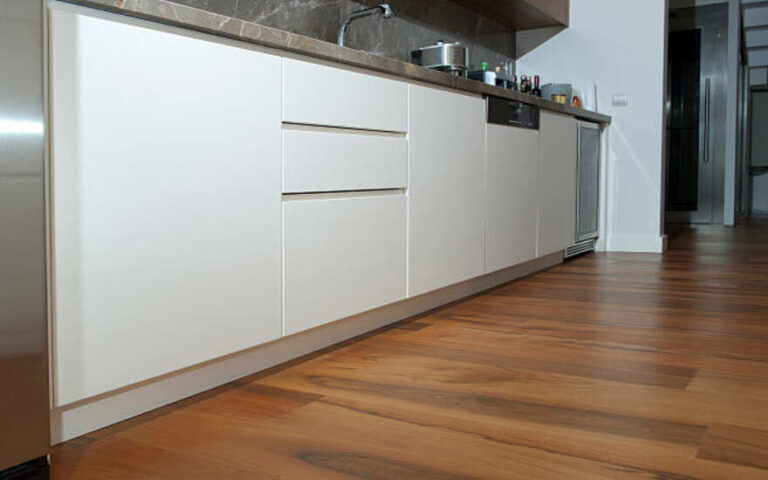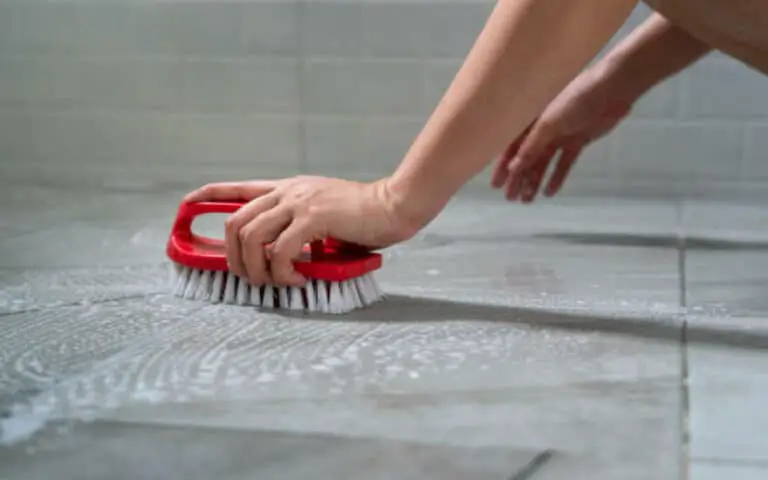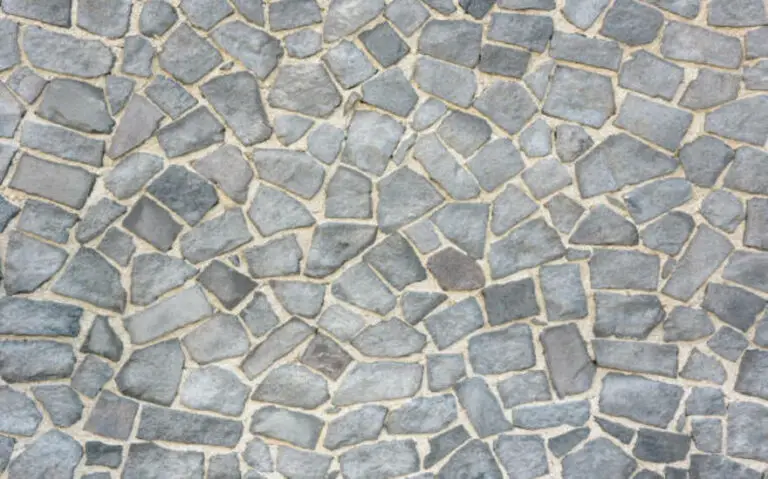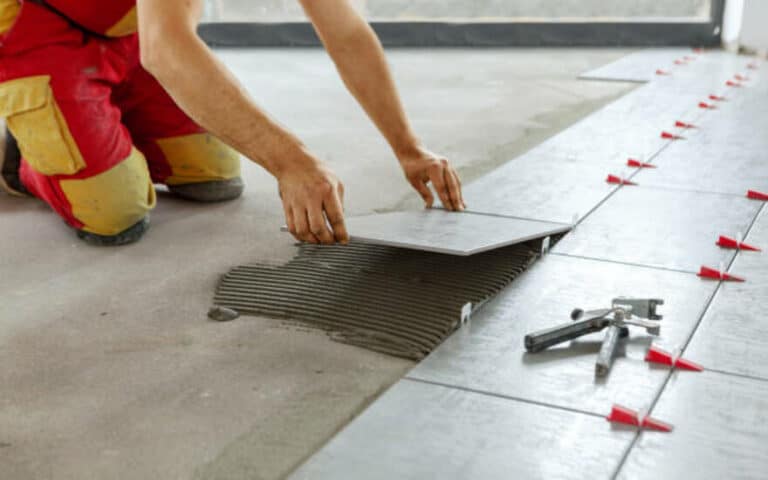Laminate floor buckling occurs when the joints between the planks loosen, and the boards start to separate. There are several reasons why this may happen, but thankfully there are some steps you can take to prevent it from happening.
This article will discuss the causes of buckling and what you can do to prevent it from happening in your home. We will also provide tips on how to fix laminate flooring that has already started to buckle.
Note: Follow the tips in this article to keep your laminate floor looking beautiful for years to come!
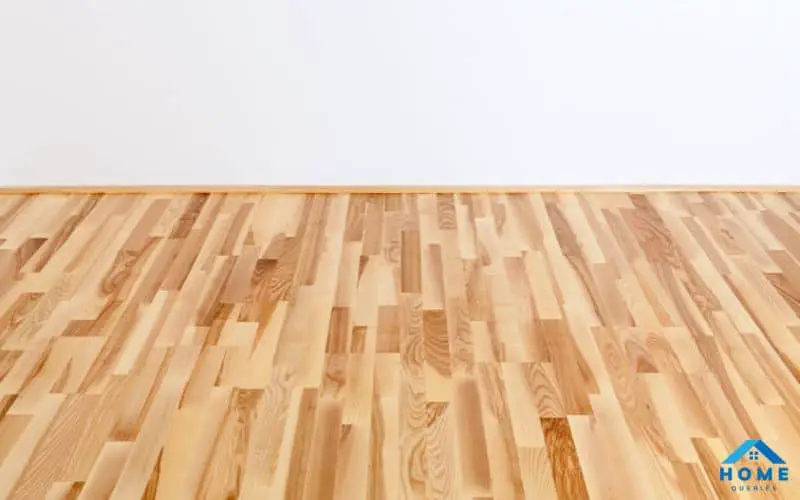
Why is my laminate floor buckling?
There are several reasons why laminate flooring may start to buckle. The reasons are given below:
1. Moisture:
If your laminate floor is exposed to excessive moisture, it can cause the joints between the planks to loosen and eventually buckle.
A way to introduce moisture into your laminate flooring is humidity. If the air in your home is too humid, it can cause the boards to swell and eventually buckle.
2. Improper installation:
One of the most common reasons for buckling laminate floors is that they weren’t installed properly. If the subfloor isn’t level or the boards aren’t laid correctly, it can cause them to buckle over time.
3. The Floor was damaged:
If something heavy falls on your laminate floor or water seeps onto the boards, it can cause them to buckle.
4. The Floor is old:
Laminate floors have about 15-20 years of lifetime. If your floor is getting close to that age, it may wear and tear, including buckling.
5. Excessive weight or traffic:
If you have a lot of foot traffic in your home or heavy furniture, it can put too much pressure on the boards and cause them to buckle.
6. Warping or contraction of the subfloor:
The subfloor warps or contracts can cause the laminate boards to buckle. This is usually caused by moisture or humidity.
7. Improperly sealed seams:
If the seams between the laminate boards aren’t properly sealed, moisture can get in and cause the boards to buckle.
8. Unevenness on the subfloor:
If the subfloor is uneven, it can cause the laminate boards to buckle. This is usually caused by settlement or shifting of the foundation.
9. Gaps between the flooring and walls or cabinets
If there are gaps between the laminate flooring and the walls or cabinets, it can cause the boards to buckle. This is usually caused by the expansion or contraction of the flooring.
10. Poor quality flooring material :
A Poor-quality laminate flooring material can be more susceptible to buckling. Make sure you use a high-quality product to avoid this issue.
11. Use excessive water when cleaning your floors:
Clean your laminate floors using a damp mop rather than a wet one. Excess water can seep into the seams and cause the boards to buckle.
12. Damage caused by moving furniture or appliances:
As I told you earlier in the “Excessive weight or traffic” part, moving furniture or appliances can cause the laminate boards to buckle. But you can avoid this by using furniture pads or felt glides under the legs of the furniture.
The signs that your laminate flooring is buckling
Buckling occurs when the boards of the laminate floor push up against each other, causing the floor to warp. If you have noticed any of the following signs, your laminate floor may be beginning to buckle, and you should call a professional for repairs.
The flooring is uneven and feels spongy in some areas: This is usually one of the first signs of buckling. If certain areas of your laminate floor feel spongy or springy when walked on, the boards are likely beginning to buckle.
The edges of the flooring are coming up: Another early sign of buckling is when the edges of the laminate flooring start coming up off the subfloor. This can happen when the adhesive to attach the laminate boards to the subfloor fails.
The flooring is warping and curving: As buckling progresses, you may begin to see visible warping and curving in your laminate floor. The boards will no longer lay flat against each other, and gaps will begin to form between them.
There are visible gaps between the flooring planks: Once buckling has progressed to this point, there will be noticeable gaps between different boards of your laminate floors. These gaps will continue to grow larger as time goes on if the problem is not addressed.
The flooring is cracking: In extreme cases, buckling can cause cracks in individual boards or the finish itself. Cracks in the finish can allow water and dirt to penetrate the inner layers of the laminate, causing even more damage.
Are there any alternatives to laminate flooring that won’t buckle
The waterproof floor will not buckle. The best examples are Bamboo floors, cork floors, and vinyl plank flooring. These three types of flooring will not buckle due to moisture.
How to fix buckled laminate flooring
Buckling laminate floors are a serious problem that should be addressed immediately. You don’t take action!! The issue will only get worse, and you may have to replace the entire floor.
Here are a few things you can do to fix a buckling laminate floor:
Install new boards: If the buckling is caused by damage or wear and tear, you may be able to replace the affected boards. This is a fairly easy process, and you should be able to find replacement boards at your local home improvement store.
Level the floor: If an uneven subfloor causes the buckling, you’ll need to level it out before you can install new laminate boards. You can do this yourself with a self-leveling compound or hire a professional to do it for you.
Install a vapor barrier: If the buckling is caused by moisture, you’ll need to install a vapor barrier before you can install new laminate boards. This will help to protect the new boards from moisture and prevent the problem from happening again.
Still got confused. Watch this youtube video.
How much does it cost to repair or replace buckled laminate flooring
Buckled wood floor
The cost to repair or replace buckling laminate flooring will vary depending on the extent of the damage and cause. Look at the table below.
You will get a ballpark estimate of the cost to repair or replace your buckled laminate floors.
| Type of Repair/ReplacementCost
Minor repair (replacing a few boards)0-0Moderate repair (replacing multiple boards)$200-$500Major repair (replacing an entire section of flooring)$500-$1000Complete replacement (installing new laminate flooring)$2000-$3000 |
Can you do the repairs yourself, or do you need a professional contractor
Most minor repairs can be done yourself, but you may need to hire a professional for more extensive damage. If you’re unsure whether you can fix the problem yourself, it’s always best to consult a professional contractor before attempting any repairs.
Conclusion:
I know seeing your beautiful floor buckling gives you pain. That’s why I tried to cover all your questions and gave you a personal recommendation. Hopefully, this post helped you.

